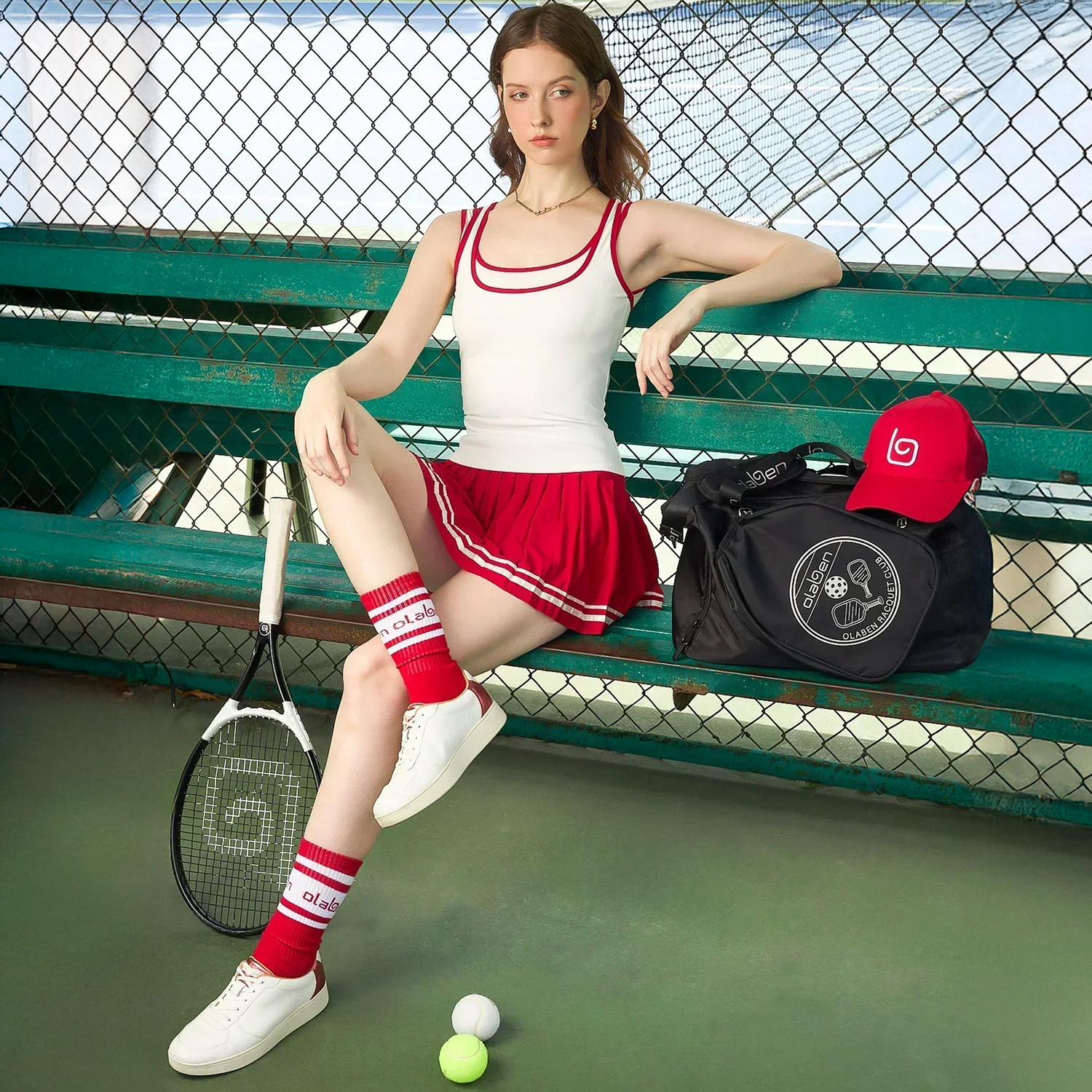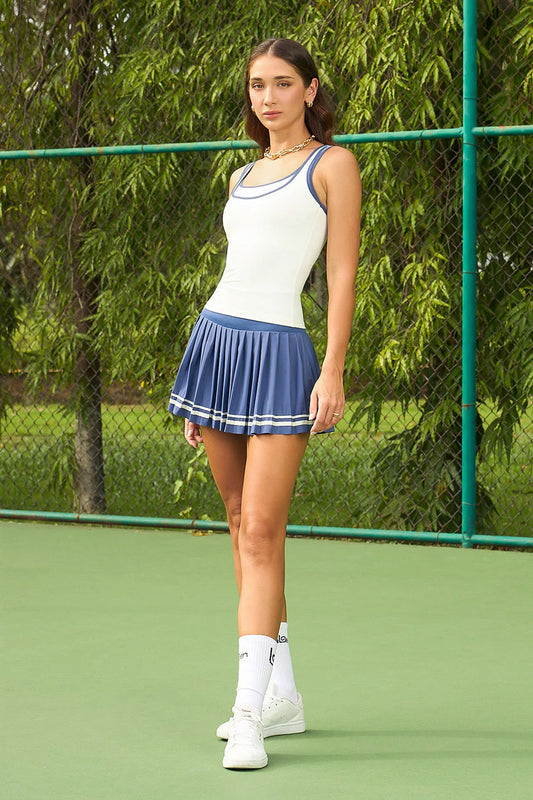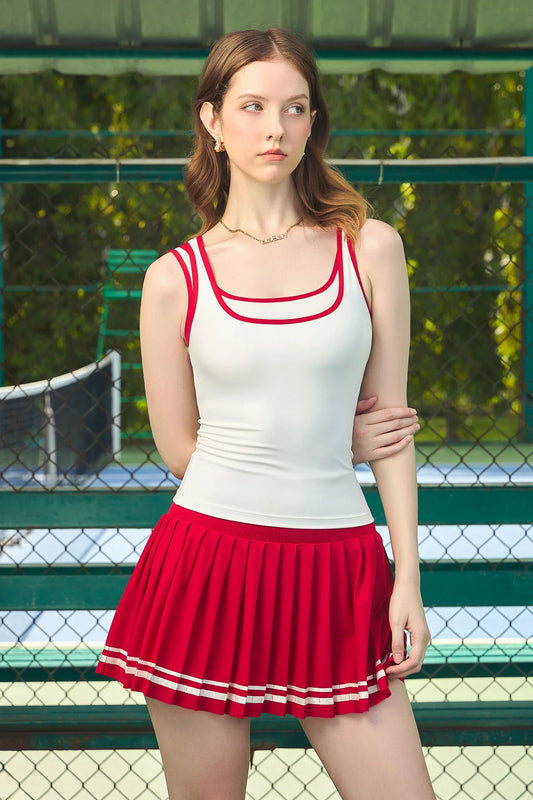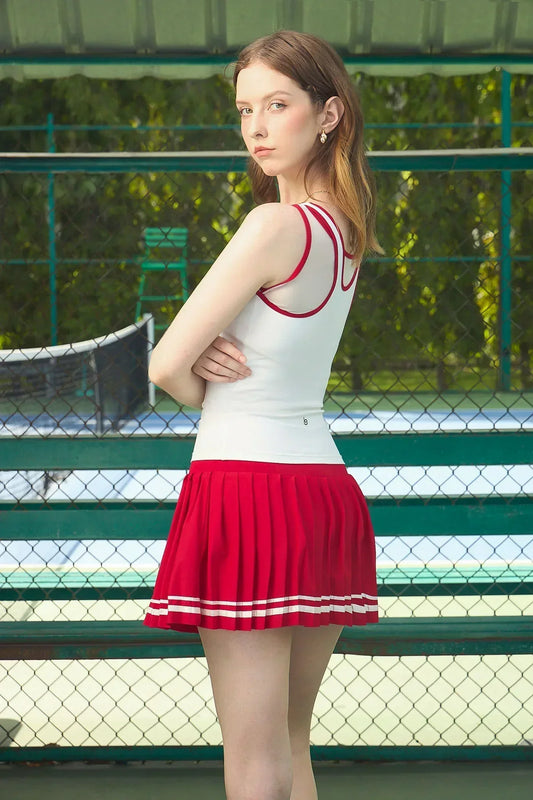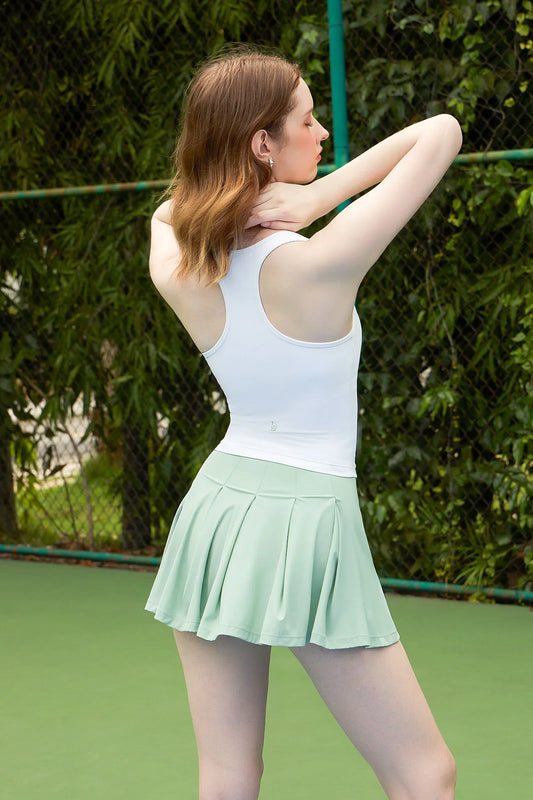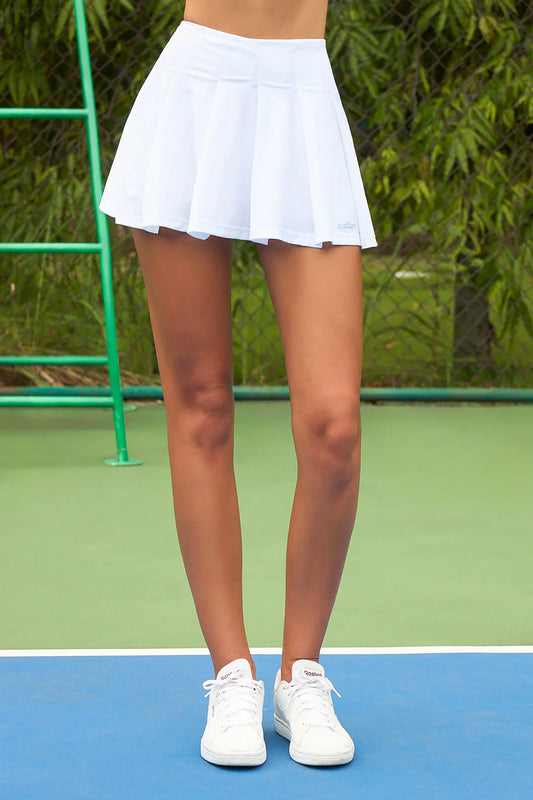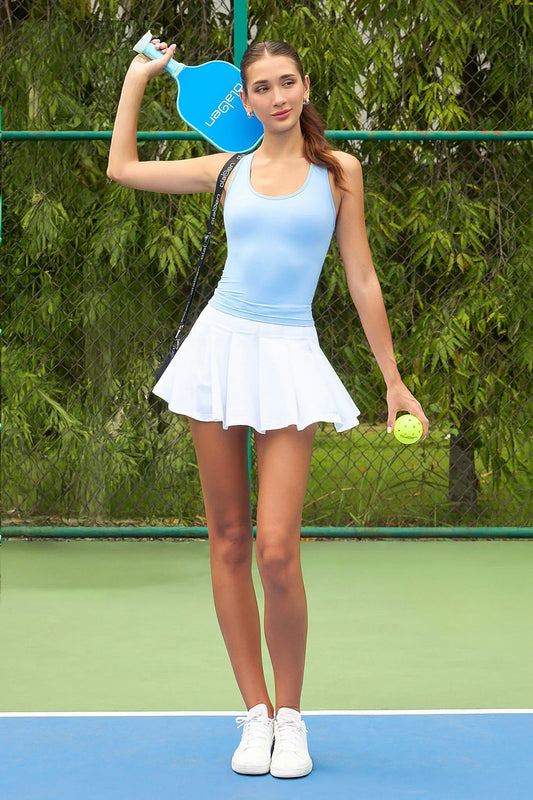In pickleball, the serve is the first action of every rally and the skill that sets the pace of the entire match. A solid serve not only reduces unforced errors but also creates an immediate advantage by putting pressure on your opponent right from the start. This guide breaks down the most common serving techniques, how to perform them correctly, the mistakes beginners often make and how to avoid them. The goal is to give you a strong foundation so you can step onto the court with confidence.
1. Topspin Serve
The topspin serve sends the ball fast and deep while keeping it safely in the court. Once the ball hits the ground, the downward spin makes it drop quickly, forcing the opponent into a tougher return.
How to perform it step by step:
- Start with one foot forward and one foot back for balance.
- Rotate your torso slightly toward your hitting side.
- Swing from your dominant side across your body, similar to a forehand stroke.
- At contact, the paddle face should be perpendicular to the court and parallel to the ball.
- As the ball leaves the paddle, tilt your wrist slightly upward to generate spin.
- Finish with the back of your wrist facing your cheek.
Key tip: The ideal contact point is around knee height. If you want stronger spin, a paddle with a textured surface will help you create more friction and rotation.

2. Slice Serve (Backspin)
A slice serve creates backspin, the opposite of topspin. After bouncing on the opponent’s court, the ball typically veers off its path, making it harder to predict and return.
How to perform it:
- Take the same initial stance as the topspin serve, but open the paddle face about 45 degrees.
- Brush the ball with the paddle edge in an upward, curved motion.
- At the end of the swing, the inside of your wrist should face your cheek (opposite of the topspin serve).
- Maintain constant wrist rotation to keep the spin consistent.
- Ideal contact height: around knee level or slightly below.
Slice serves are especially useful when you want to disrupt rhythm or force the opponent into awkward, low returns.

3. Flat Serve
The flat serve is the fastest and most direct serve in pickleball. It travels with minimal arc and heads straight toward the target.
Best suited for:
Intermediate or athletic players who like aggressive play.
How to perform it:
- Stand behind the baseline with your dominant foot back.
- Drop the ball from waist height without tossing it.
- Swing the paddle straight forward with the paddle head below your waist.
- Make contact under the hip, ensuring the ball stays low.
- Aim deep into the diagonal service box.
Tip: Flat serves can be powerful but inconsistent. Beginners should start with lighter force and gradually increase power.

4. Common Serving Mistakes and How to Fix Them
Even players with experience often struggle with serve mechanics. These errors seem small but can affect power, accuracy and confidence. Below are the three most common mistakes and how you can correct them.
a) Shoulders not aligned with the target
When your shoulders are not facing the direction of the serve, the entire body rotates off-axis. This causes the paddle to lose power and accuracy.
How to fix it:
- Align your shoulders with the target line before swinging.
- Turn your torso slightly back, then rotate forward as you swing.
- Practice by imagining (or drawing) a straight line on the court and keeping your shoulders parallel to it.
Good shoulder alignment alone can dramatically improve consistency.
b) Not transferring body weight
Many beginners rely only on their arm to hit the serve, causing weak and unstable shots.
How to fix it:
- Begin with more weight on your back foot.
- Shift your weight forward as you swing.
- Step forward lightly after contact to stay balanced.
- Using your whole body will immediately increase power and control.
c) Dropping the ball from too high
A high drop makes it difficult to control the contact point and may cause illegal serves if the ball falls too quickly.
How to fix it:
- Release the ball from waist height or slightly lower.
- Keep your releasing arm relaxed.
- Let the ball fall gently so you can choose the ideal contact point.
This is the easiest mistake to fix but one of the most important to avoid.

5. Serving Rules You Must Remember
Serving in pickleball follows strict guidelines. Even a technically good serve can be ruled a fault if it doesn’t follow the rules. Here are the most important ones:
1. Contact point must be below the waist
Your serve is only legal if the ball is struck below the waistline. This prevents players from hitting downward serves similar to tennis smashes.
2. The paddle head must be below the wrist at contact
This ensures that the serve motion is upward, not downward. A simple rule of thumb: your wrist should be the highest point of your hitting arm at contact.
3. The ball must be released naturally, not tossed
You must let the ball fall freely from your hand. Throwing, flicking or spinning the ball excessively is considered a violation.
4. Your feet cannot cross the baseline before contact
You must stand behind the baseline, and your feet may not step over it until the ball leaves the paddle. Stepping forward too early is a common fault among beginners.
5. The serve must land in the diagonal service box
If you serve from the right side, the ball must land in the right service box of your opponent and vice versa. The ball cannot land in the Non-Volley Zone (Kitchen) on the serve.
6. Know the rules to avoid unnecessary faults
Many players lose points not because they hit poorly but because they unknowingly violate basic serving rules. Understanding these fundamentals allows you to serve confidently and experiment with more advanced techniques like topspin, slice or flat serves.


